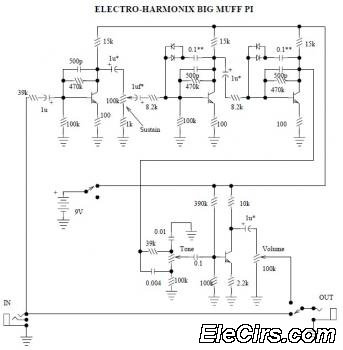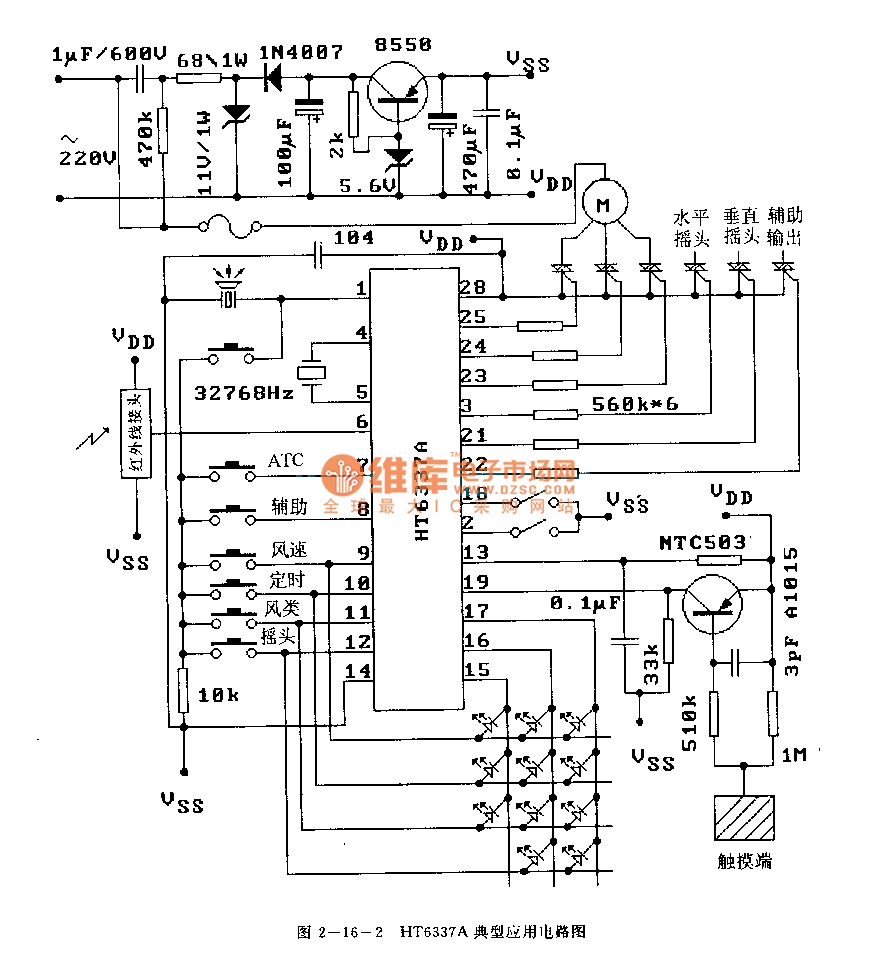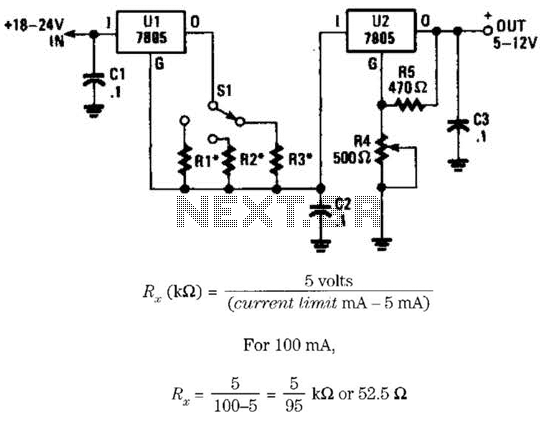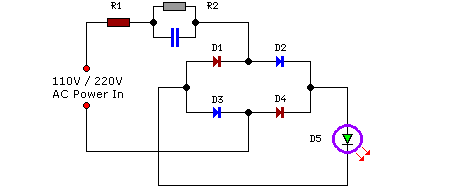
Guitar Effect Circuit : Electro Harmonix Big Muff Pi

The Electro Harmonix Big Muff Pi circuit would likely benefit from the incorporation of a modern input-jack power connection and a DPDT bypass switch. The specific types of transistors and diodes used in the circuit are not specified. It is probable that any high-quality components could be utilized.
The Electro Harmonix Big Muff Pi is a renowned distortion and fuzz pedal commonly used in electric guitar applications. The circuit typically consists of multiple stages of gain and clipping, allowing for a wide range of tonal possibilities.
To enhance the performance and usability of the Big Muff Pi, a contemporary input-jack power connection can be integrated. This modification would provide a more reliable power source and potentially improve the overall noise performance of the circuit. The use of a DPDT (Double Pole Double Throw) bypass switch is also advisable. This switch allows for true bypass operation, ensuring that when the effect is disengaged, the signal path remains unaltered, preserving the original tone of the instrument.
While the specific transistors and diodes used in the circuit remain unspecified, it is essential to select high-quality components to maintain the desired sound characteristics. Transistors typically used in fuzz circuits include silicon and germanium types, each contributing distinct tonal qualities. Diodes, often used for clipping, can also significantly affect the sound, with options ranging from standard silicon diodes to more exotic choices like LED or germanium diodes.
In conclusion, implementing a modern input-jack power solution and a DPDT bypass switch, along with carefully selected high-quality transistors and diodes, can enhance the functionality and sound quality of the Electro Harmonix Big Muff Pi circuit, making it more suitable for contemporary use.This Electro Harmonix Big Muff Pi circuit would most likely be better making the change by a contemporary input-jack power and a DPDT bypass switch. The kinds of transistors and diodes are unknown. It really is most likely that any high acq.. 🔗 External reference
The Electro Harmonix Big Muff Pi is a renowned distortion and fuzz pedal commonly used in electric guitar applications. The circuit typically consists of multiple stages of gain and clipping, allowing for a wide range of tonal possibilities.
To enhance the performance and usability of the Big Muff Pi, a contemporary input-jack power connection can be integrated. This modification would provide a more reliable power source and potentially improve the overall noise performance of the circuit. The use of a DPDT (Double Pole Double Throw) bypass switch is also advisable. This switch allows for true bypass operation, ensuring that when the effect is disengaged, the signal path remains unaltered, preserving the original tone of the instrument.
While the specific transistors and diodes used in the circuit remain unspecified, it is essential to select high-quality components to maintain the desired sound characteristics. Transistors typically used in fuzz circuits include silicon and germanium types, each contributing distinct tonal qualities. Diodes, often used for clipping, can also significantly affect the sound, with options ranging from standard silicon diodes to more exotic choices like LED or germanium diodes.
In conclusion, implementing a modern input-jack power solution and a DPDT bypass switch, along with carefully selected high-quality transistors and diodes, can enhance the functionality and sound quality of the Electro Harmonix Big Muff Pi circuit, making it more suitable for contemporary use.This Electro Harmonix Big Muff Pi circuit would most likely be better making the change by a contemporary input-jack power and a DPDT bypass switch. The kinds of transistors and diodes are unknown. It really is most likely that any high acq.. 🔗 External reference





